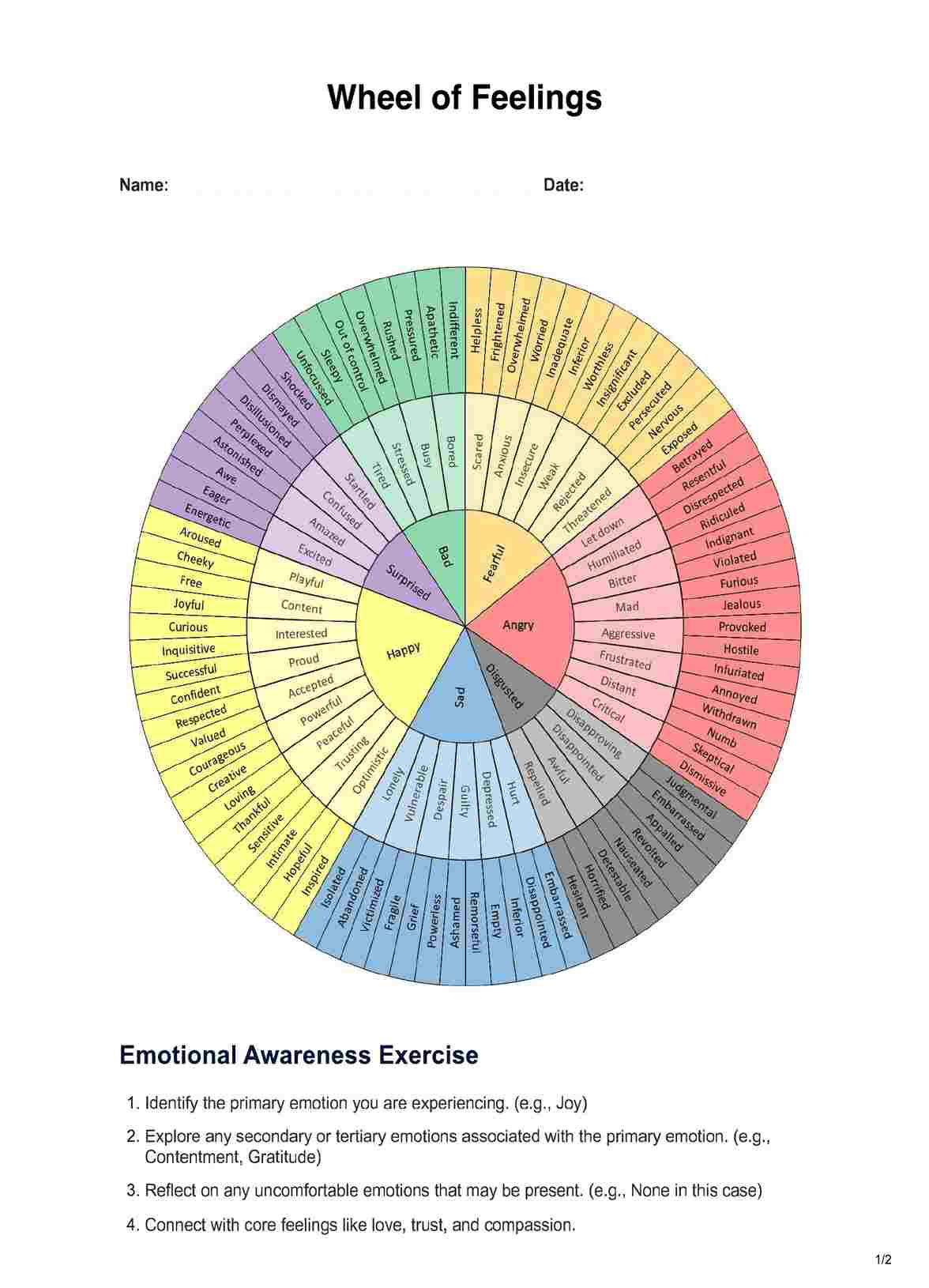The wheel enhances emotional awareness, communication, and self-reflection. It allows individuals to delve beyond basic emotions, fostering a deeper understanding of their emotional landscape.

Wheel of Feelings Template
Enhance healthcare communication with our Wheel of Feelings Template—facilitating empathy and understanding in patient interactions.
Use Template
Wheel of Feelings Template Template
Commonly asked questions
Yes, many therapists incorporate the wheel into their practice to facilitate discussions about emotions, improve communication, and support clients in exploring their feelings.
While there are no strict rules, users are encouraged to identify their primary emotions and explore the associated secondary and tertiary feelings. It's a tool for self-reflection and emotional exploration.
EHR and practice management software
Get started for free
*No credit card required
Free
$0/usd
Unlimited clients
Telehealth
1GB of storage
Client portal text
Automated billing and online payments











